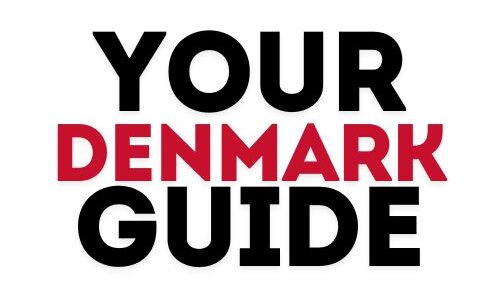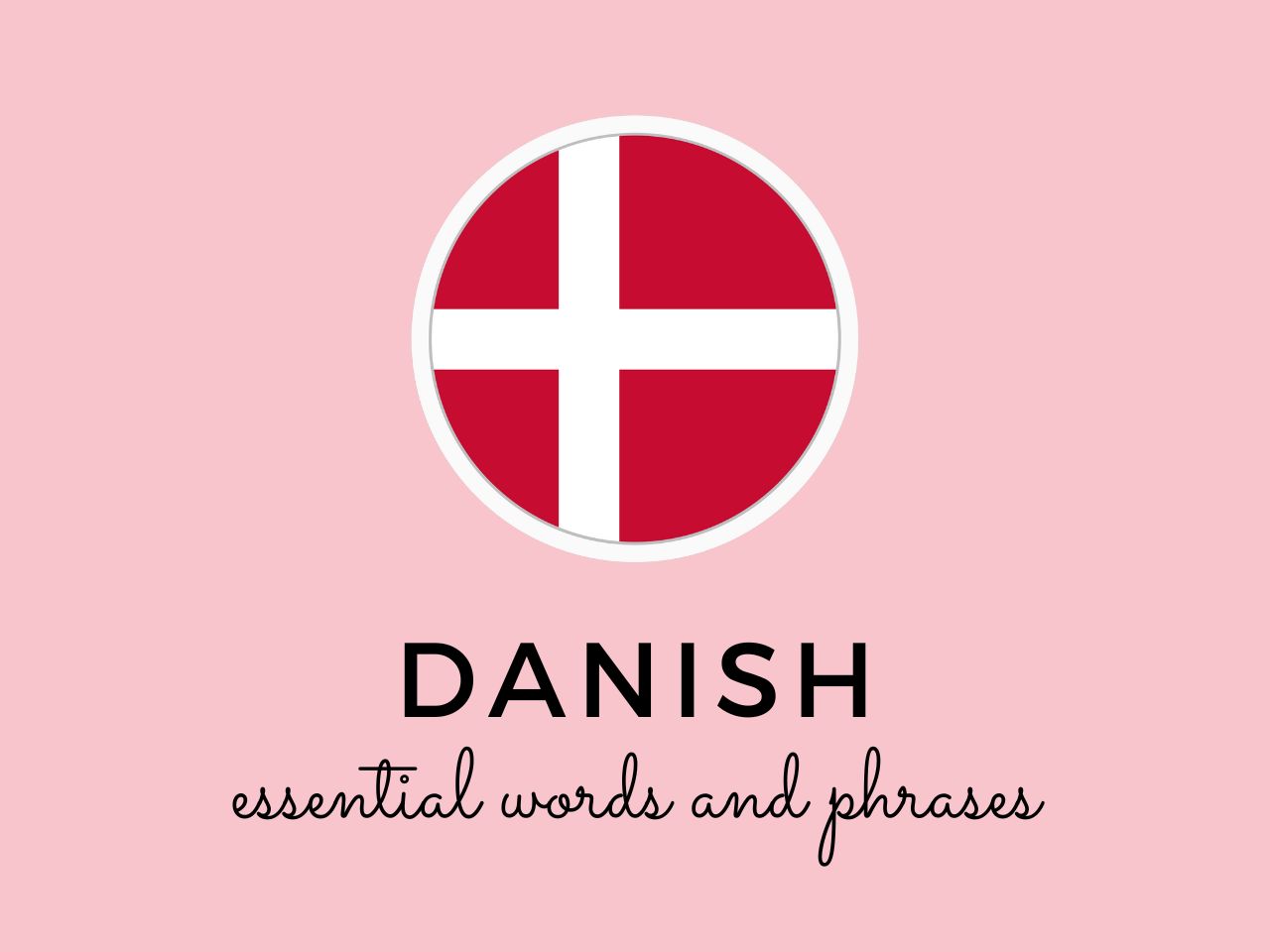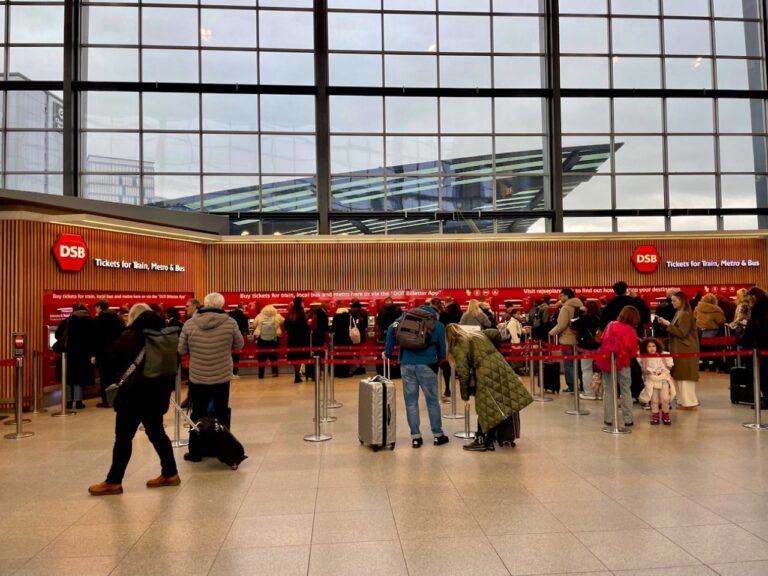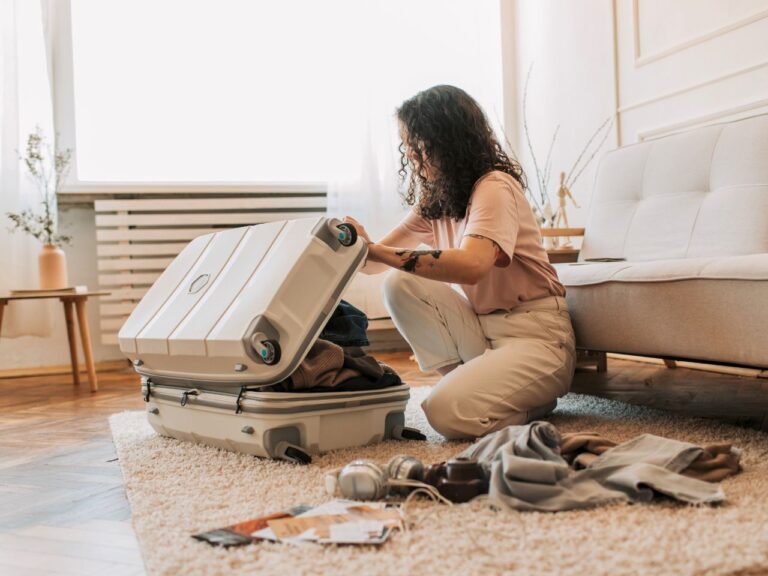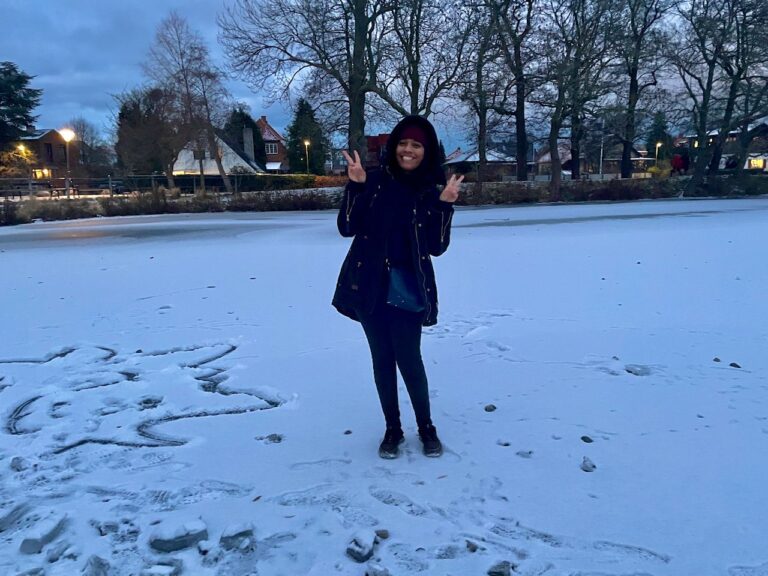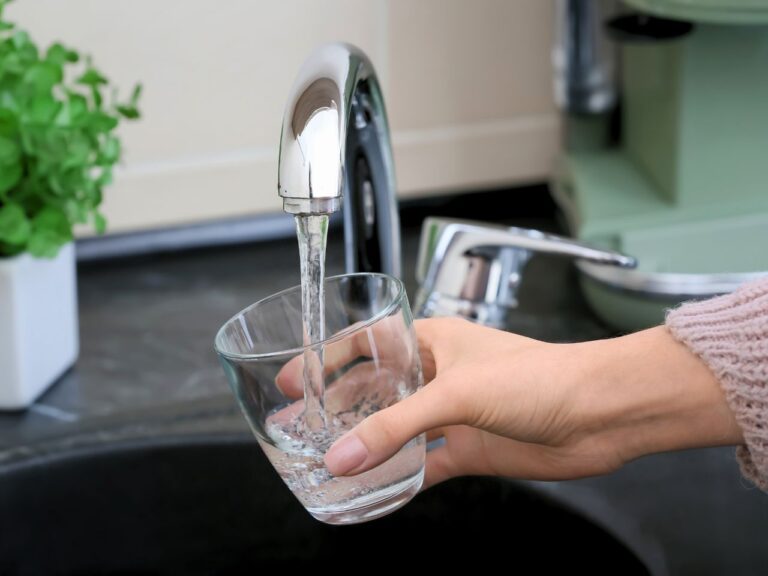Basic Danish Words And Phrases For Travelers

Traveling to Denmark and want to pick up some basic Danish?
Learning a few keywords and phrases in the local language makes starting a conversation or asking about elementary needs easier.
As an expat living in Denmark for a few years and completed Level 3 in Danish, I’ve created this beginner-friendly guide, carefully reviewed by native Danish speakers for accuracy.
So, if you are planning to visit Denmark soon, master these essential Danish phrases before your trip to make your experience more engaging.
Let’s get started— Velkommen til Danmark! (Welcome to Denmark!)
In This Post:
Do I need to Speak Danish in Denmark?
In short, No. You don’t have to. Danes speak excellent English. However, using their language—even just a little—can make their faces smile bright.
I can assure you that knowing simple words like tak (thank you) or hej (hello) can make your trip more immersive! Locals will definitely appreciate you for trying.
Did you know? The Danish alphabet has standard English letters and three additional vowels, å (aa), æ (ae), and ø (oe).
Common Danish Words and Phrases
- Hello – Hej (Pronunciation: Hi)
- Thank you – Tak (Pronunciation: Tak)
The most common way to say thanks or thank you is “tak.” If you wish to say “many thanks” or “thanks a lot,” use “mange tak.”
- You’re welcome – Selv tak (Pronunciation: Sel tak)
- Excuse me – Undskyld mig (Pronunciation: Unskul my)
- Please
The Danish language has no word for “please”.
- Sorry – Undskyld (Pronunciation: Unskul)
- Yes – Ja (Pronunciation: Ya)
- No – Nej (Pronunciation: Nay)
- I don’t know – Jeg ved ikke (Pronunciation: Ya vel ikke)
- Wait – Vente (Pronunciation: Vente)
- Stop – Hold op (Pronunciation: Hol op)
- Good day – God dag (Pronunciation: Go day)
Danes usually prefer to say good day instead of good morning. But you can also say good morning.
- Good morning – God morgen (Pronunciation: Go moren)
- Good evening – God aften (Pronunciation: Go aften)
- Goodbye – Farvel (Pronunciation: Farvel)
- Bye Bye – Hej Hej (Pronunciation: Hi hi)
- See you soon – Vi ses snart (Pronunciation: Vi ses snart)
- Do you speak English? – Taler du Engelsk? (Pronunciation: Taler du Engelsk?)
- I don’t speak Danish – Jeg taler ikke Dansk (Pronunciation: Ya taler ikke dansk)
- How are you? – Hvordan har du det? (Pronunciation: Hvordan har du de?)
The literal translation of these phrases means “How are you feeling?”. There is no exact translation of “How are you?” in Danish.
- I am fine – Jeg har det fint (Pronunciation: Ya har de fin)
- What is your name? – Hvad hedder du? (Pronunciation: Hva heller du?)
- My name is <yourname> – Jeg hedder <yourname> (Pronunciation: Ya heller <yourname>)
- I don’t understand – Jeg forstår det ikke (Pronunciation: Ya forsto de ikk)
Public Signs
- Entrance – Indgang (Pronunciation: Ingang)
- Exit – Udgang (Pronunciation: Ulgang)
- Toilet – Toilet (Pronunciation: Toilet)
- Men – Mænd (Pronunciation: Maend)
- Women – Kvinder (Pronunciation: Kvinner)
- Open – Åben (Pronunciation: Oben)
- Closed – Lukketm (Pronunciation: Lukkel)
Emergencies and Assistance: How to Ask for Help in Danish?
- Help – Hjælp (Pronunciation: Hiaelp)
- Hospital – Hospital (Pronunciation: Hospital)
- It Hurts – Det gør ondt (Pronunciation: De gor ondt)
- Call the Police – Ring til politiet (Pronunciation: Ring til politiet)
- Fire – Brand (Pronunciation: Brand)
Call 112 to access police, ambulance, and fire brigade services
Useful Danish Phrases to Use While Shopping
- How much does this cost? – Hvor meget koster dette? (Pronunciation: Hvor ma-al koster de?)
- What is this? – Hvad er dette? (Pronunciation: Hval er de?)
- Do you accept credit cards? – Accepterer du kreditkort? (Pronunciation: Accepterer du kreditkort?)
Almost all stores accept credit cards. But if you are not sure, use this Danish phrase.
Handy Danish Phrases for Tourists
- Where is <placename>? – Hvor er <placename>? (Pronunciation: Hvor er <placename>?)
- Can you take me to this address – Kan du tage mig til denne adresse? (Pronunciation: Kan du ta mig til denne adresse?)
- One ticket to <place name> please – En billet til <place name> tak (Pronunciation: En billet til <place name> tak)
Danes use the word “tak” frequently.
- Can you take a photo of me? – Kan du tage et billede af mig? (Pronunciation: Kan du tae et billel af my?)
- I have a reservation – Jeg har en reservation (Pronunciation: Ya har en reservation)
- Taxi – Taxa (Pronunciation: Taxa)
- No Parking – Ingen parkering (Pronunciation: Ingen parkering)
- When is the next bus/ train? – Hvornår er næste bus/tog? (Pronunciation: Hvornor er naeste bus/tog?)
- I Love Denmark – Jeg elsker Danmark (Pronunciation: Ya elsker Danmark)
Denmark is called Danmark in Danish.
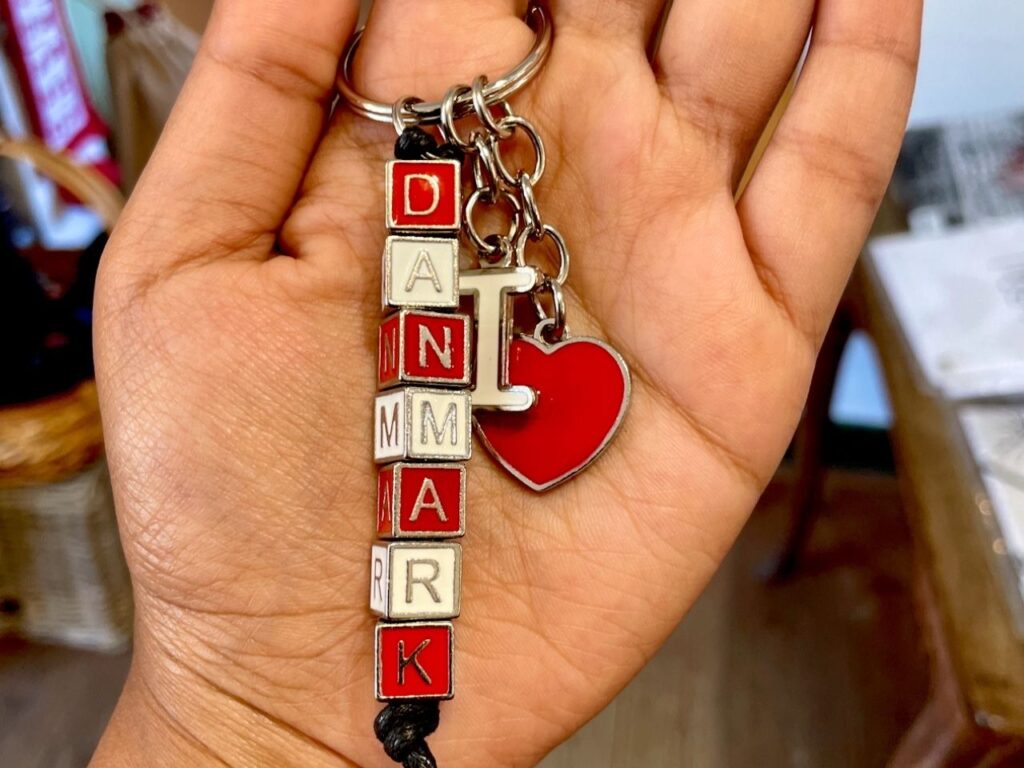
- Hygge – Hygge (Pronunciation: Hooge)
Unique Danish word that means coziness but it is so much more than that. Danes use the word hygge a lot.
Food and Drinks: Using Danish in Restaurants
- Do you have any recommendations? – Har du nogle anbefalinger? (Pronunciation: Har du noole anbefalinger)
- Menu card, please? – Menukort tak? (Pronunciation: Menukort tak?)
- Tap water, please? – postevand tak? (Pronunciation: van tak?)
When you ask for water in a restaurant, they usually give you Danskvand or carbonated water. So, be specific about what you want.
- Do you have vegetarian food? – Har du vegetarisk mad? (Pronunciation: Har du vegetarisk mal?)
- Cheers – Skål (Pronunciation: Skol)
- This is nice – Det er dejligt (Pronunciation: De er dailit)
- Beer – Øl (Pronunciation: Oul)
- Wine – Vin (Pronunciation: Veen)
- Coffee – Kaffe (Pronunciation: Kaffe)
- Tea – Te (Pronunciation: Te)
- Breakfast – Morgenmad (Pronunciation: Morenmal)
- Lunch – Frokost (Pronunciation: Frokost)
- Dinner – Aftensmad (Pronunciation: Aftensmal)
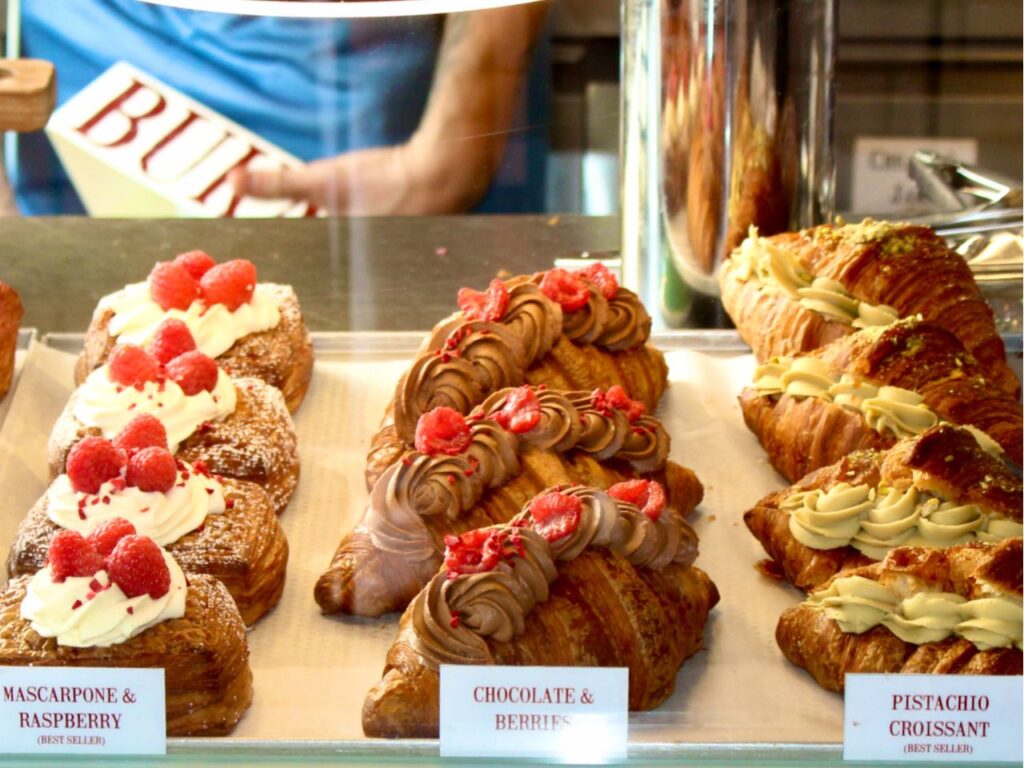
Pronunciation Tips
The first step to nailing Danish is getting the accent right—it’s all about mastering those unique sounds! While many Danish letters resemble English ones, a few will definitely surprise you.
- a pronounced like “a” in “cat”
- e pronounced like “e” in “even”
- i pronounced like “i” in “email”
- o pronounced like “o” in “most”
- u pronounced like “oo” in “food”
- æ pronounced like “e” in “energy”
- ø pronounced like “u” in “hurt”
- å pronounced like “o” in “open”
- j pronounced like “y” in “you”
- y pronounced like “u” in “use”
Quick Danish Language Facts
- Danish language has 32 different dialects but there is no word for “please.”
- Dansk translates to Danish.
- Denmark is called “Danmark” in Danish and Copenhagen is København (Pronounced as Kubenhavn)
- The Danish alphabet includes the standard English letters plus three extra vowels: å (aa), æ (ae), and ø (oe), which comes after the letter Z.
Danish Language Book and Other Resources to Learn
- Lonely Planet Fast Talk Danish
- YT channels like Danish Mastery and Learn Danish with DanishClass101.com
- Mobile applications such as Duolingo, Babbel, etc.
- Google Translate
Best Language Schools in Copenhagen
If you’re curious about learning Danish like I am, there are plenty of excellent language schools across Denmark to help you get started.
Many cater specifically to expats, offering flexible schedules and tailored programs. Some of the best ones to consider include Studieskolen and UCPluss.
Frequently Asked Questions
What is the language of Denmark?
Danish is the language spoken by the people of Denmark. Danish is also the official and national language of the country.
Is English spoken in Denmark?
Absolutely! The majority of Danes are fluent in English, and many can understand and communicate quite well.
What are the Danish-speaking countries?
Danish is primarily spoken by about 6 million people in Denmark, Greenland, the Faroe Islands, and parts of Germany, especially Schleswig-Holstein.
Advantages of Learning Danish
Here are some of the pros of learning the Danish language –
You can communicate with the locals with ease and confidence. It helps you understand the culture, history, and traditions better.
If you’re staying for long you could get a job in the local shop.
In case of emergencies knowing the national language comes in handy.
Learning Danish also helps you understand its sister languages, Norwegian and Swedish.
What is “I Love You” in the Danish language?
I Love You in Danish is “Jeg elsker dig”, pronounced as “Ya elsker dai”.
Is Danish hard to learn?Is Danish hard to learn?
As an English speaker, I’d call it moderately challenging. Reading is easy, sentence pattern is similar to English (Subject + Verb + Object) but mastering Danish pronunciation and spelling is where things get tricky. Silent letters sneak in everywhere, and words often sound nothing like they’re written! It takes some practice to get the hang of it.
How long does it take to learn Danish?
It might take a year or two to speak good Danish, depending on how much you indulge and practice the language. Remember that fluency comes with practice.
Do you have to learn Danish to live in Denmark?
Knowing the language is good if you plan to stay long. Otherwise, you can easily survive with English.
Can I learn Danish for free in Denmark?
If you have CPR in Denmark, you can learn Danish for free in language schools. However, you need to pay a deposit, which will be returned after you pass certain tests.
Final Thoughts: Basic Danish Words and Phrases for Travelers
Knowing basic Danish words and phrases can genuinely enhance your travel experience in Denmark.
From my personal experience, Danes truly value the effort when someone tries to speak their language, even if it’s just a few words. Danish is mostly spoken here and learning the language not only shows respect for the local culture but also opens up opportunities for meaningful interactions with locals.
Don’t be shy—Even if you know a little Danish, give it a try! Your effort will always be met with kindness and encouragement!
Denmark Travel Checklist
More Posts
- Mind-blowing facts about Denmark that will amaze you
- How much does it snow in Copenhagen?
- Danish pastries and best bakeries in Copenhagen to try them!
- What to buy from Denmark as souvenirs?
- Budget travel: Tips to save money in Tivoli Gardens
- Best Spa Hotels for a relaxed Copenhagen trip
- Where to watch new year’s eve fireworks in Copenhagen?
- Christmas traditions in Denmark you might not have heard of!
- Top things to do in Denmark this winter
- Best places to visit and things to do in Christiania
